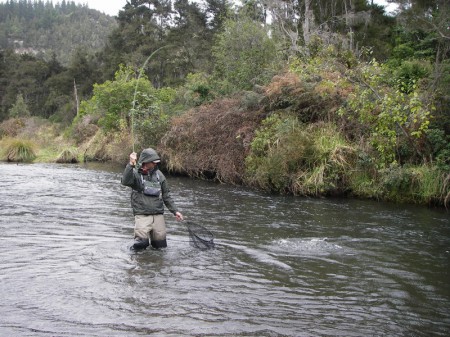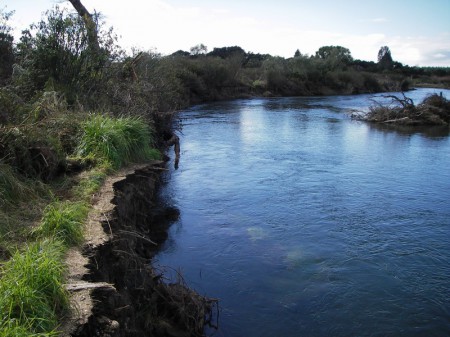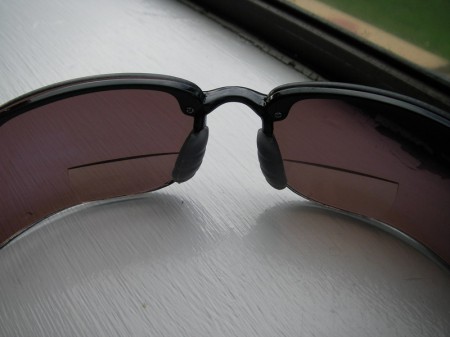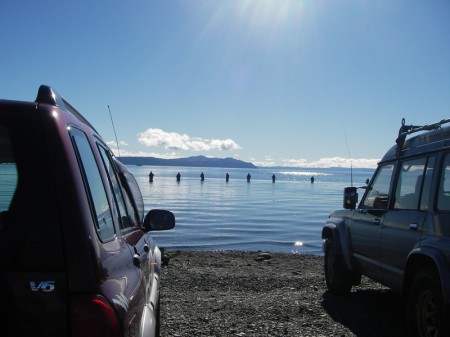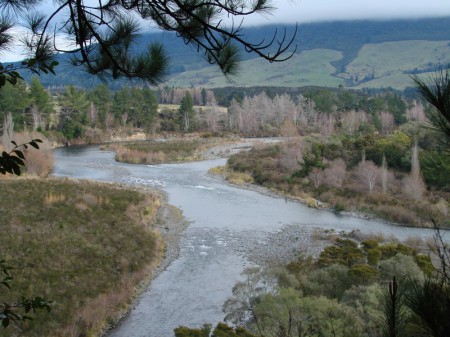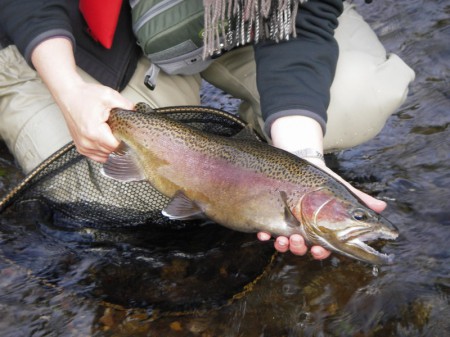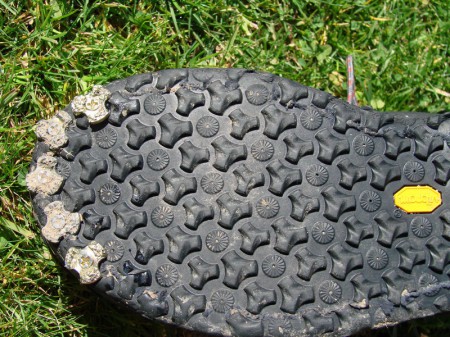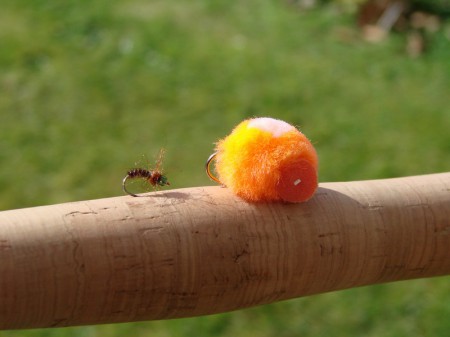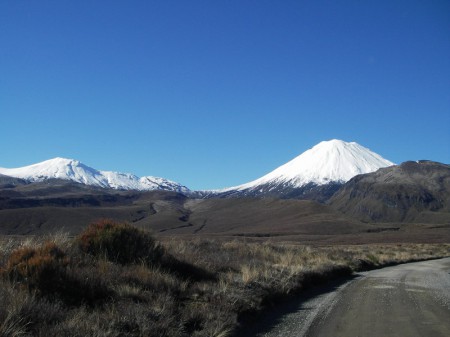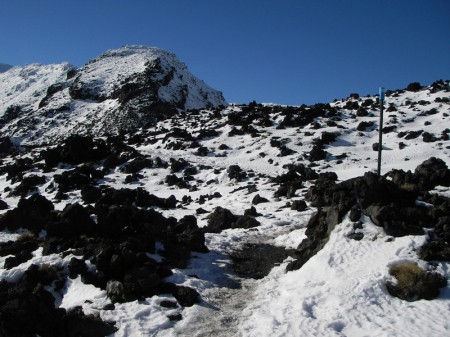Taranaki wonderland
We decided to spend winter in Turangi and take advantage of the year round fishing available in Lake Taupo and some of the local rivers; the mighty Tongariro being the most famous of them all. 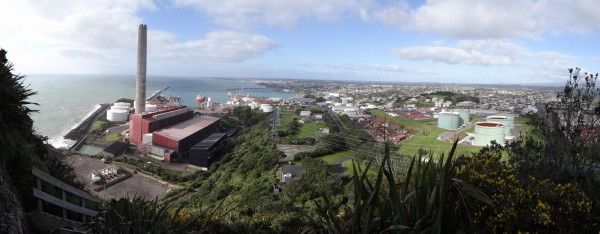 Although the number of fish and their size and condition had been in decline for several years, the fish already caught by anglers this winter season seemed to indicate a remarkable recovery and we were looking forward to being back.
Although the number of fish and their size and condition had been in decline for several years, the fish already caught by anglers this winter season seemed to indicate a remarkable recovery and we were looking forward to being back.
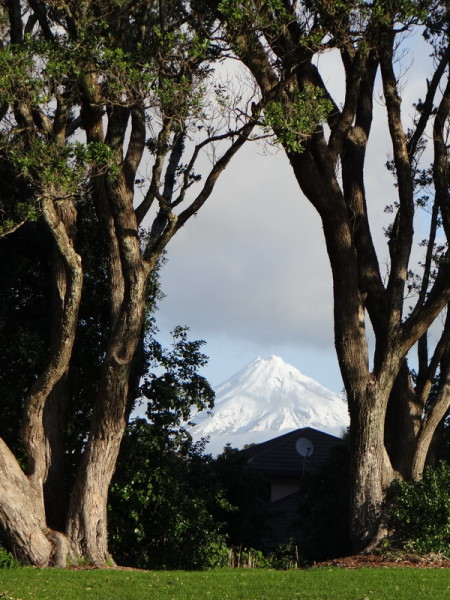 But before heading to Turangi, the west coast of the North Island with Mount Taranaki and Egmont National Park stood high on our bucket list. On all the previous trips to New Zealand, we missed out on this spectacular region and it was time to change that. We had seen Mt Taranaki from the top of its eastern neighbour, Mt Tongariro, but from up close it looked even more impressive. 2’518m high Mt Taranaki/Mt Egmont is flanked by two smaller volcanoes and dominates the landscape with its distinctive shape. With the summit being just over 20km from the coast, the mountain offers unparalleled views out to sea and over fertile farmland. The slopes of Mt Taranaki display a unique mosaic of many different types of vegetation, from lush rainforests to tussock lands and alpine swamps. As early as 1900 Egmont National Park was established, covering around 33’500 hectares. Today, the mountain features a visitor centre, several access roads and a great network of walking tracks. Taranaki is also an important dairy farming region and has attracted an unusually high number of settlers from Switzerland. May be the area reminds them of their home country?
But before heading to Turangi, the west coast of the North Island with Mount Taranaki and Egmont National Park stood high on our bucket list. On all the previous trips to New Zealand, we missed out on this spectacular region and it was time to change that. We had seen Mt Taranaki from the top of its eastern neighbour, Mt Tongariro, but from up close it looked even more impressive. 2’518m high Mt Taranaki/Mt Egmont is flanked by two smaller volcanoes and dominates the landscape with its distinctive shape. With the summit being just over 20km from the coast, the mountain offers unparalleled views out to sea and over fertile farmland. The slopes of Mt Taranaki display a unique mosaic of many different types of vegetation, from lush rainforests to tussock lands and alpine swamps. As early as 1900 Egmont National Park was established, covering around 33’500 hectares. Today, the mountain features a visitor centre, several access roads and a great network of walking tracks. Taranaki is also an important dairy farming region and has attracted an unusually high number of settlers from Switzerland. May be the area reminds them of their home country?
Mt Taranaki is an active volcano, research shows that the last major eruption took place in the middle of the 17th century; statistically Mt Taranaki has a major eruption every 500 years.
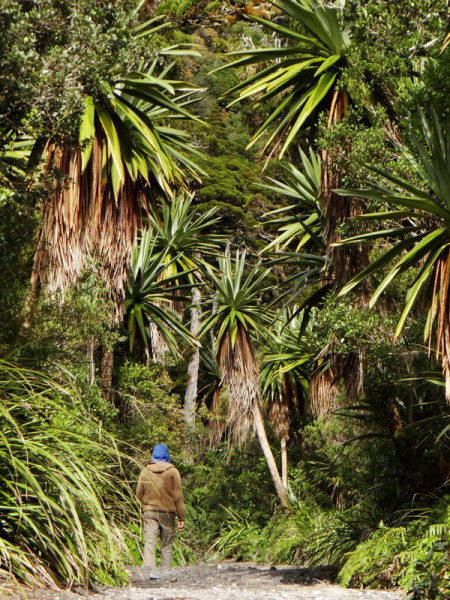
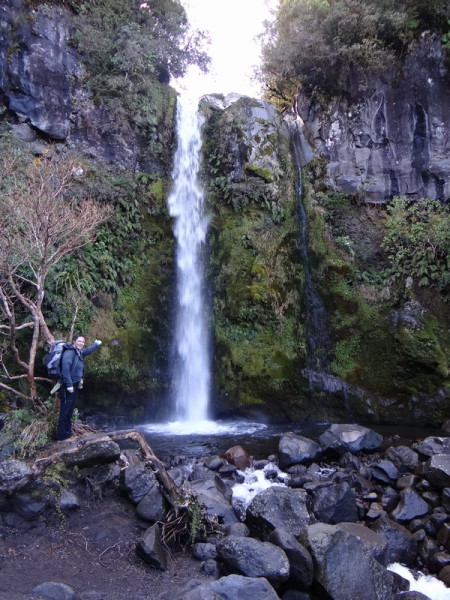 We based ourselves in New Plymouth, the major city of the region and with a population of just over 50’000 a very lively place. The area features some of New Zealand’s best surfing spots and if one is keen enough, it is possible to go skiing in the morning and surfing in the afternoon. We decided to take it easy and explored the costal walkway with its great beaches. New Plymouth has upgraded its waterfront remarkably and pedestrians and cyclists have an excellent choice of designated tracks. The city is also home to many beautiful parks and even with winter still in full swing, many plants were already blooming thanks to warm weather and a generally mild climate. And we walked some of the great tracks up the mountain of course, enjoying the stunning scenery and the unique flora.
We based ourselves in New Plymouth, the major city of the region and with a population of just over 50’000 a very lively place. The area features some of New Zealand’s best surfing spots and if one is keen enough, it is possible to go skiing in the morning and surfing in the afternoon. We decided to take it easy and explored the costal walkway with its great beaches. New Plymouth has upgraded its waterfront remarkably and pedestrians and cyclists have an excellent choice of designated tracks. The city is also home to many beautiful parks and even with winter still in full swing, many plants were already blooming thanks to warm weather and a generally mild climate. And we walked some of the great tracks up the mountain of course, enjoying the stunning scenery and the unique flora.
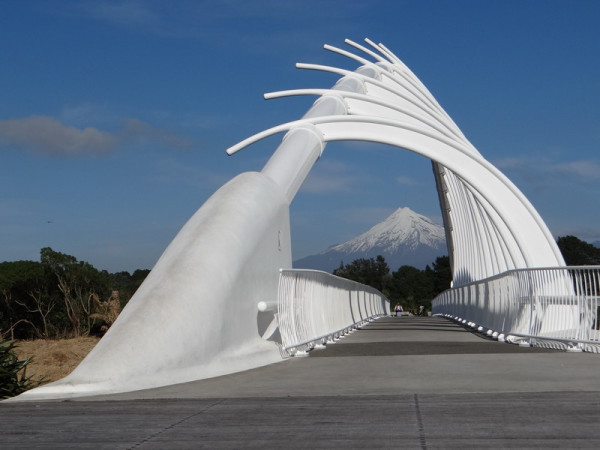
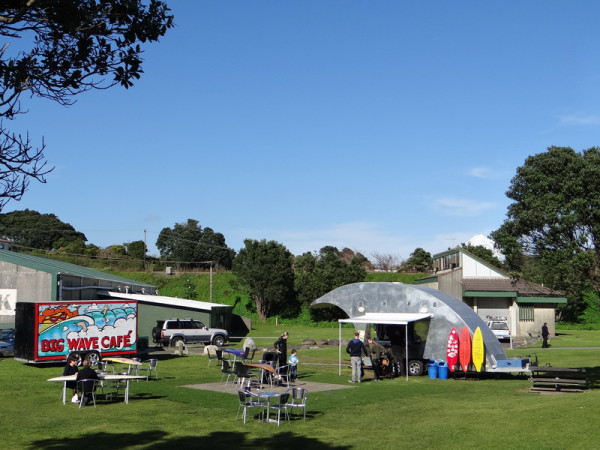
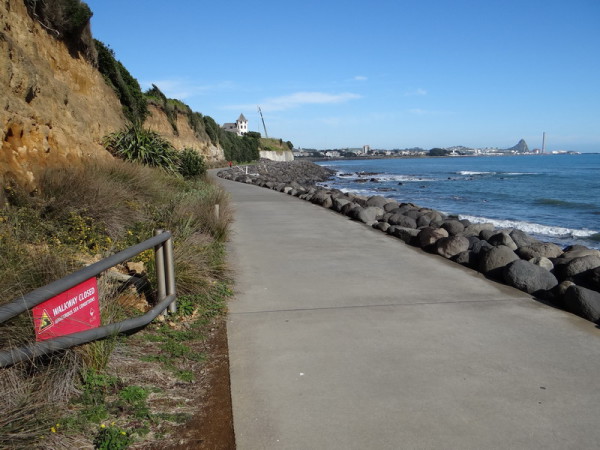 After 10 very pleasant and relaxing days, we left New Plymouth and headed east. The Forgotten World Highway from Stratford to Taumarunui proved to be a very picturesque route indeed and we enjoyed the relaxed drive through steep hill country with small settlements and many historical features.
After 10 very pleasant and relaxing days, we left New Plymouth and headed east. The Forgotten World Highway from Stratford to Taumarunui proved to be a very picturesque route indeed and we enjoyed the relaxed drive through steep hill country with small settlements and many historical features.
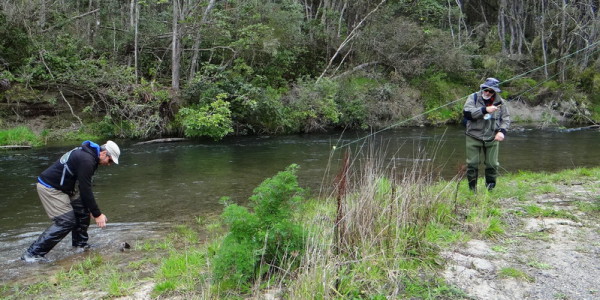 Although the Taranaki region has some amazing fishing for trout on offer, the rods stayed put over there and we were as keen as mustard to give it a go in Turangi. When we arrived, the rivers were running low and clear, usually not the best conditions for good runs of fish. But despite the lack of rain, the fishing improved a week or so after our arrival and the number and size of fish caught were remarkable. We have said it before, if one is seeking solitude and tranquility, fishing the Tongariro in winter is probably not going to be a good idea.
Although the Taranaki region has some amazing fishing for trout on offer, the rods stayed put over there and we were as keen as mustard to give it a go in Turangi. When we arrived, the rivers were running low and clear, usually not the best conditions for good runs of fish. But despite the lack of rain, the fishing improved a week or so after our arrival and the number and size of fish caught were remarkable. We have said it before, if one is seeking solitude and tranquility, fishing the Tongariro in winter is probably not going to be a good idea. 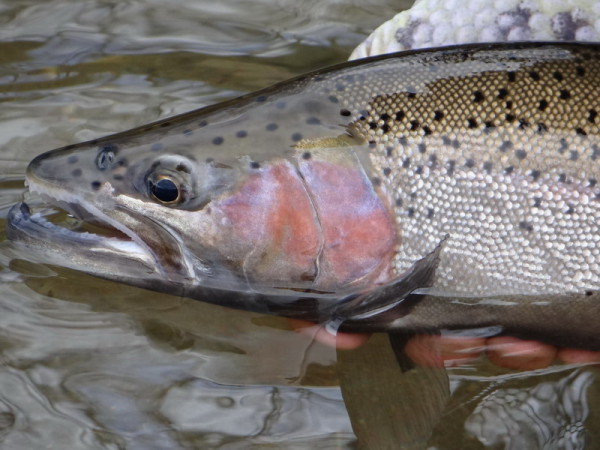 Too many anglers are keen to catch one of the famous Taupo rainbow or brown trout and the river can get really crowded. The smaller rivers north of Turangi are usually less frequented and we found a new favorite of ours. More of a stream than a river, it was an absolute pleasure to fish. We spent many days along its banks and only twice did we encounter other anglers.
Too many anglers are keen to catch one of the famous Taupo rainbow or brown trout and the river can get really crowded. The smaller rivers north of Turangi are usually less frequented and we found a new favorite of ours. More of a stream than a river, it was an absolute pleasure to fish. We spent many days along its banks and only twice did we encounter other anglers.
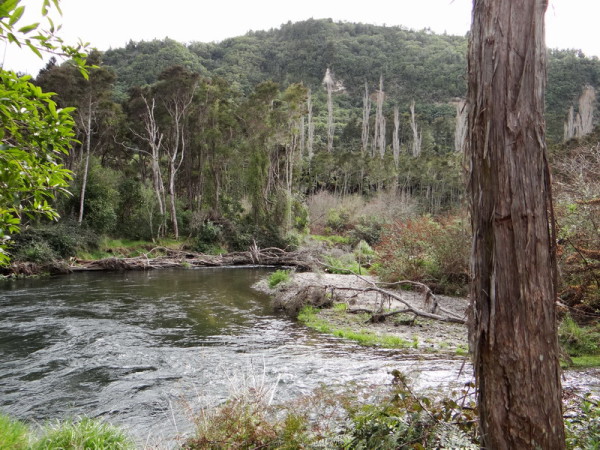 During the first weeks of our stay, the Taurango Taupo River and the Hinemaiaia River, two other personal favourites, did not hold a lot of fish due to a lack of rain. But after a spell of wet weather, the fish started to run up from the lake and we had exciting fishing. Both rivers are a trout’s paradise with deep pools, shallow riffles, long glides and heaps of drift wood and some impressive log jams.
During the first weeks of our stay, the Taurango Taupo River and the Hinemaiaia River, two other personal favourites, did not hold a lot of fish due to a lack of rain. But after a spell of wet weather, the fish started to run up from the lake and we had exciting fishing. Both rivers are a trout’s paradise with deep pools, shallow riffles, long glides and heaps of drift wood and some impressive log jams.
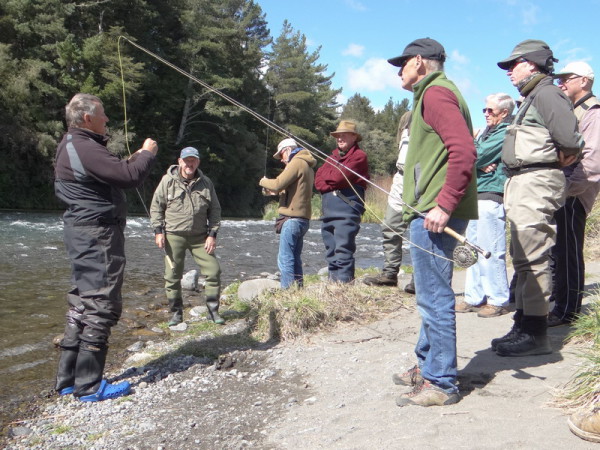 Many years ago in one of the fishing magazines, we read an article about a special cast, called the Tongariro Roll Cast. The article was written by Herb Spannagl, a passionate fly fisher with an intimate knowledge of the Tongariro River. When we heard that Herb was going to hold a casting clinic, we did not have to think twice and registered for the event straight away. Herb and two of his friends did a great job indeed teaching the cast to about 15 people with Béatrice being the only woman in the group. The Tongariro Roll Cast, like many other casts, seems easy to learn when performed by an expert, but things were looking a bit different when we tried to master it ourselves. Herb was an excellent teacher though and everyone made progress during the day. The two of us will have to practice a lot more to get it right, but mastering this cast is worth all the effort; the Tongariro Roll Cast is such an amazing tool when using heavy nymphs. It is a lot less tiring then a regular overhead cast, it’s faster and it eliminates any danger of the heavy flies hitting the caster. And, like any other roll cast, it requires very little room behind the caster.
Many years ago in one of the fishing magazines, we read an article about a special cast, called the Tongariro Roll Cast. The article was written by Herb Spannagl, a passionate fly fisher with an intimate knowledge of the Tongariro River. When we heard that Herb was going to hold a casting clinic, we did not have to think twice and registered for the event straight away. Herb and two of his friends did a great job indeed teaching the cast to about 15 people with Béatrice being the only woman in the group. The Tongariro Roll Cast, like many other casts, seems easy to learn when performed by an expert, but things were looking a bit different when we tried to master it ourselves. Herb was an excellent teacher though and everyone made progress during the day. The two of us will have to practice a lot more to get it right, but mastering this cast is worth all the effort; the Tongariro Roll Cast is such an amazing tool when using heavy nymphs. It is a lot less tiring then a regular overhead cast, it’s faster and it eliminates any danger of the heavy flies hitting the caster. And, like any other roll cast, it requires very little room behind the caster.
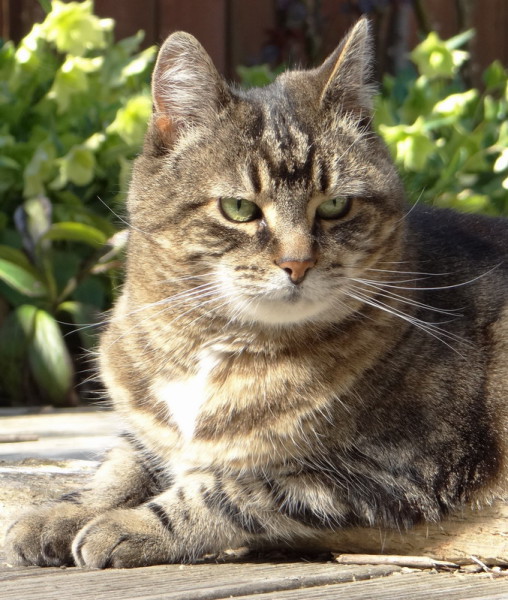 While in Turangi, we were looking after the house of friends who spent 4 weeks overseas. It was quite a change to have a big house all to ourselves with a beautiful garden full of spring flowers and even our very own cat. Although it was for a limited time only, we thoroughly enjoyed the feeling. Time went by far too quickly and we had to think about the last two months of our stay – after almost four years of travelling, our plane back to Switzerland was going to leave at the beginning of December. After some serious thinking and debating we came to the conclusion, that we should travel south again and spend most of October and November on the South Island before heading back up north.
While in Turangi, we were looking after the house of friends who spent 4 weeks overseas. It was quite a change to have a big house all to ourselves with a beautiful garden full of spring flowers and even our very own cat. Although it was for a limited time only, we thoroughly enjoyed the feeling. Time went by far too quickly and we had to think about the last two months of our stay – after almost four years of travelling, our plane back to Switzerland was going to leave at the beginning of December. After some serious thinking and debating we came to the conclusion, that we should travel south again and spend most of October and November on the South Island before heading back up north.
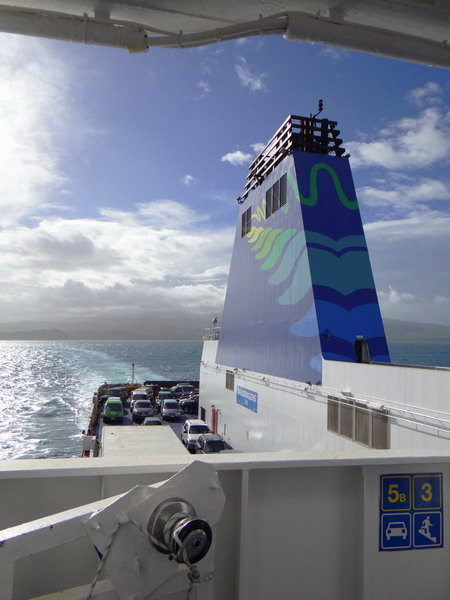 We left Turangi and caught a ferry across Cook Strait the next day. The weather forecast predicted strong winds and we feared the worst, but the crossing was calm and no one got sea sick. Our intention was to travel down the West Coast and over Haast Pass to Mossburn in Southland as soon as possible with just 3 nights stopover along the way. While in Reefton, we checked the road conditions to make sure everything was fine. Unfortunately, the highway over Haast Pass was closed again, due to a massive landslide and rock slips caused by heavy rain about two weeks earlier. A camper van got caught up in the mayhem at the time and a young couple from overseas got killed. Because of the size of the slip, it was only possible to open the road temporarily and especially after rain, the road had to be closed again.
We left Turangi and caught a ferry across Cook Strait the next day. The weather forecast predicted strong winds and we feared the worst, but the crossing was calm and no one got sea sick. Our intention was to travel down the West Coast and over Haast Pass to Mossburn in Southland as soon as possible with just 3 nights stopover along the way. While in Reefton, we checked the road conditions to make sure everything was fine. Unfortunately, the highway over Haast Pass was closed again, due to a massive landslide and rock slips caused by heavy rain about two weeks earlier. A camper van got caught up in the mayhem at the time and a young couple from overseas got killed. Because of the size of the slip, it was only possible to open the road temporarily and especially after rain, the road had to be closed again.
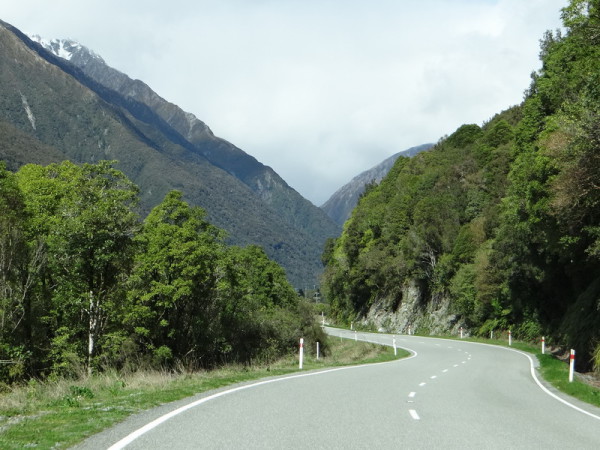
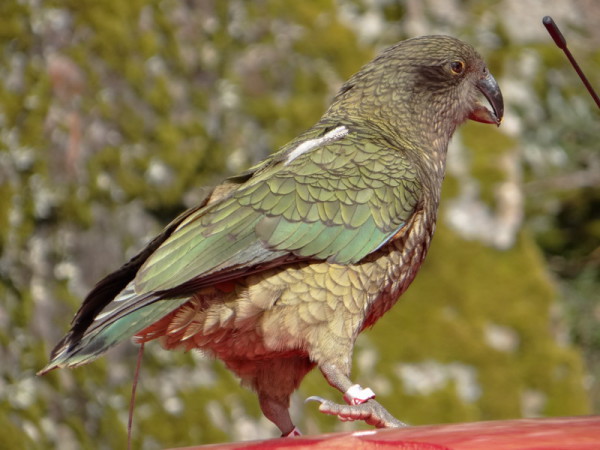
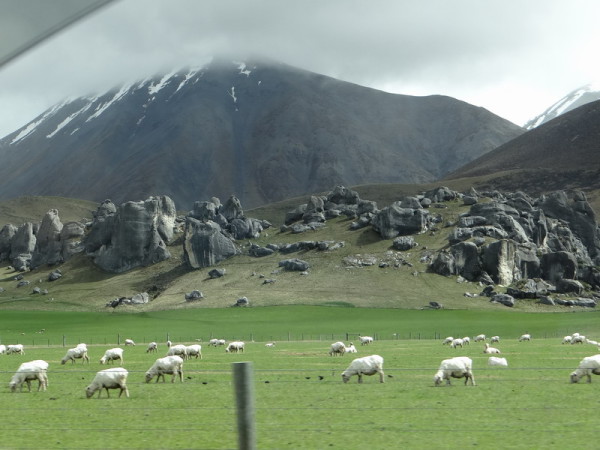 Not knowing how long the closure would last this time, we decided to drive over
Not knowing how long the closure would last this time, we decided to drive over
Arthur’s pass and down the East Coast.
